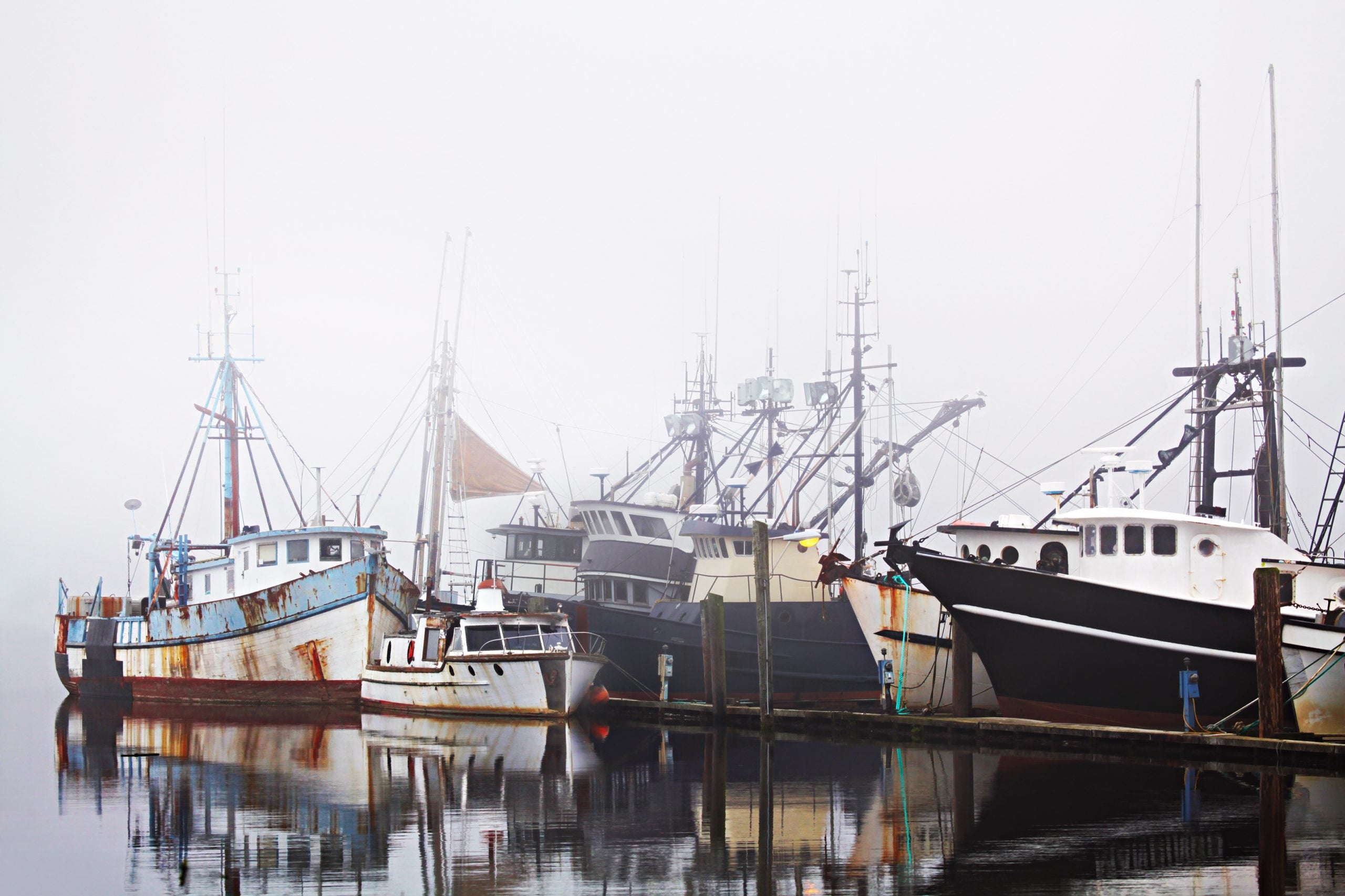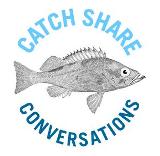If you follow the goings-on of the U.S. Congress, you know that the final months of the year have become a sprint to the finish line marked by bursts of legislative energy and must-pass bills. This year is even more energetic than most. Read More
EDFish
Selected tag(s): Bering Sea
Something ‘fishy’ is happening in Congress
‘Deadliest Catch’ Fisherman Explains How His Job is Less Deadly Thanks to Catch Shares
The Discovery Channel’s The Deadliest Catch portrays just how dangerous commercial fishing can be. However, in today’s Wall Street Journal, Bering Sea fisherman and a cast member of the show, Scott Campbell, Jr., shares how the Alaska crab fishery is now significantly safer following the implementation of catch shares in August 2005. Read the full article here.
New Study Finds Crew in Bering Sea Crab Fisheries Benefitted from Catch Shares
Guest blogger, Joshua Abbott, is an Assistant Professor in Arizona State University’s School of Sustainability. Abbott is an expert in environmental and natural resource economics, including fisheries economics and policy.

EDFish Guest Blogger - Joshua Abbott, Assistant Professor, School of Sustainability, Arizona State University
A recent assessment of the Bering Sea red king crab and snow crab fisheries finds that the majority of working crew have benefitted from the transition to catch shares in the first three years of its implementation.
The peer-reviewed article, coauthored by James Wilen, Brian Garber-Yonts and I, is published in the current issue of Marine Resource Economics.
Historically, over 200 vessels competed for the annual crab catch, leading to “derby” fisheries in which an entire year’s quota was exhausted in the space of a few days. This type of management led to boom and bust cycles, which often had negative environmental, social, and economic consequences.
Starting in the 2005/2006 season the derby was supplanted by a catch share system in which each vessel has an individual allocation of quota and can adjust this allocation by lease arrangements or permanent transfers with other quota owners.
Seasons are now two to three times the typical derby season and thus a larger number of short derby fishery jobs have been replaced by a smaller number of longer, safer, more stable and often more lucrative positions. When measured in total crew hours engaged in fishing, employment has remained stable following implementation of catch shares.
Crew wages, as in many fisheries around the world, are determined using the “share” system. Payments are based on a defined share of fishing revenues minus costs such as fuel, food and bait. Comparisons of these contracts suggest that the crew’s share of net revenues has been fairly stable since catch-share implementation – hovering around 40% for a typical vessel. However, this stability masks important, and generally positive, changes in pay for crewmembers relative to before 2005.
The seasonal pay of crew has increased substantially. The analysis found that the median crew member on king crab vessels earned 66% more in a season than in prior seasons while approximately 87% of crew saw their wage rise. These increases occurred despite large coinciding price decreases for crab, which were largely driven by market factors unrelated to the catch share program. When this decrease in value is controlled for (by measuring pay in terms of the quantity of crab), increases in seasonal crew wages are even more dramatic – 122% and 109% for the median crew member on king crab and snow crab vessels, respectively.
These increases in pay are partially attributable to the stacking of quota on fewer vessels over longer seasons. However, the daily “wage” of crew has also risen for many crewmembers. For instance, the daily pay of a typical king crab fishermen rose by 12% after catch share implementation. And despite the new cost of deducting the cost of quota from net revenues (a product of recognizing the value of the crab stock in fishing profits), daily pay has remained relatively stable and crew have prospered.
Many of these changes originate from improvements in the productivity of fishing. Live landings of crab per day have improved by 16% for snow crab and 38% for king crab since the implementation of catch shares. Research into the source of these productivity improvements continues, but some of the credit lies in the dramatic reduction of time spent waiting in port to offload crab. The coordination of delivery dates and slowing of the pace of fishing made possible by catch shares have increased the proportion of time actually spent fishing.
Catch share management has also substantially changed the nature of a fishing job. Since each vessel knows its annual allocation of crab prior to the fishing season, the prospective wage is far less uncertain to crew than in the derby fishery where luck and skipper skill once played a large role in one’s prospects. Risk to life and limb has also decreased considerably, as skippers avoid fishing in the worst weather and often work their crew for fewer hours in a day.
While these fisheries are still adapting to catch shares, the negative scenarios often levied at this catch share program have not materialized. Rather, the early evidence is that catch shares have provided longer, safer, more reliable jobs to fishermen that are often more lucrative than those available before the management change.
Bering Sea Crabbers Say Catch Shares Have Been an ”Unqualified Success”
Reprinted with permission from SEAFOODNEWS.COM
SEAFOOD.COM NEWS [seafoodnews.com] – December 10, 2010 – Alaska’s Bering Sea crabbers are calling the catch share program that has been operating in their crab fisheries since 2005 an “unqualified success.”
This assesssment came in a five-year review of the catch share program by the North Pacific Fishery Management Council which is meeting in Anchorage.
Prior to catch shares, hundreds of boats would race to load up with crab in wild winter conditions in a fishery that would lasting mere days or weeks. Under the catch share system, each vessel has a set amount of crabs to catch during extended seasons.
Crabbers claim their “grounds truth” proves that the new way of crab fishing is achieving the goals set out by managers and industry five years ago.
The problems associated with the crab fishery were identified in 2002 as resource conservation, reducing bycatch, excess harvesting and processing capacity, economic instability, high loss of life and injuries. The results of the five-year review released last month by Council staff concluded that the Bering Sea/Aleutian Islands Crab Catch Share Program is performing better than expected in reaching its objectives.
The report also said remaining crew positions in the crab fisheries are more stable, and crew generally make better pay under the catch share program.
Crabbers were pleased with the review findings, said Edward Poulsen, director of Alaska Bering Sea Crabbers, a trade group representing 70% of the vessels fishing crab in the Bering Sea.
“From the harvesters’ perspective, we feel the catch share program has met or exceeded expectations in delivering against the problems it was intending to solve,” Poulsen said.
Notably, the Bering Sea crab fisheries have gone from being the deadliest catch to the safest catch.
Arni Thomson, director of the Alaska Crab Coalition said: “We lost 85 crabbers between 1989 and 2005, an average of 5.3 men per year. Since then, there has been one fatality and no vessel sinkings. The catch share program has saved 25 lives so far.”
Crabbers say the slower paced fishery is far more eco-friendly, with less impact on the crab and their habitat. Pot usage in the red king crab fishery, for example, has gone from 50,000 to 12,000 pots, a 76% reduction. By fishing more strategically, the crab fleet uses far less fuel, cutting its carbon footprint by more than half.
Poulsen said the catch share program encourages being “co-operators instead of cutthroat competitors who all benefit by working together”.
How Alaska’s Crab Fishery Went from Deadliest Catch to Safest Catch
Reprinted with permission from SeaFoodNews.com (July 23, 2010)
A new study by the Anchorage-based National Institute for Occupational Safety and Health (NIOSH) details 504 fishing-industry deaths from 2000 through 2009. Shrimp fishing in the Gulf of Mexico was by far the most deadly fishery with 55 lives lost. That compares to a death toll of 12 Bering Sea crabbers during the same time. In fact, the Bering Sea crab fisheries can claim the lowest loss of life for all of Alaska’s major fisheries.
Since 2005, when the crab fishery began operating under a slower paced catch share system, one life has been lost in the Bering Sea; there have been no vessel sinkings.
Prior to catch shares, hundreds of boats would race to load up with Bering Sea crab in wild winter fisheries lasting mere days or weeks. Now, each vessel has a set amount of crabs to catch during extended seasons.
The improved safety is ‘black and white,’ said veteran crabber Bill Prout of Kodiak. ‘It’s so much better. We can wait for good weather. It’s really paying off in saved lives.’
Third generation crabber Lance Farr of Seattle said sleep deprivation is no longer an issue in the famous crab fisheries. ‘The catch share program has done what it was intended to do,’ Farr said. ‘It’s made it safer.’
Longtime crab skipper Kale Garcia agreed. ‘I know we’ll have to keep all the drama for Hollywood, but the reality is the Bering Sea crabbers have gone from the deadliest catch to the safest catch.’
The Bering Sea crab fleet is also more organized, having established an association, called the Alaska Bering Sea Crabbers, an alliance that represents all crab fisheries of the Bering Sea and Aleutian Islands and they have a website at www.alaskaberingseacrabbers.org











